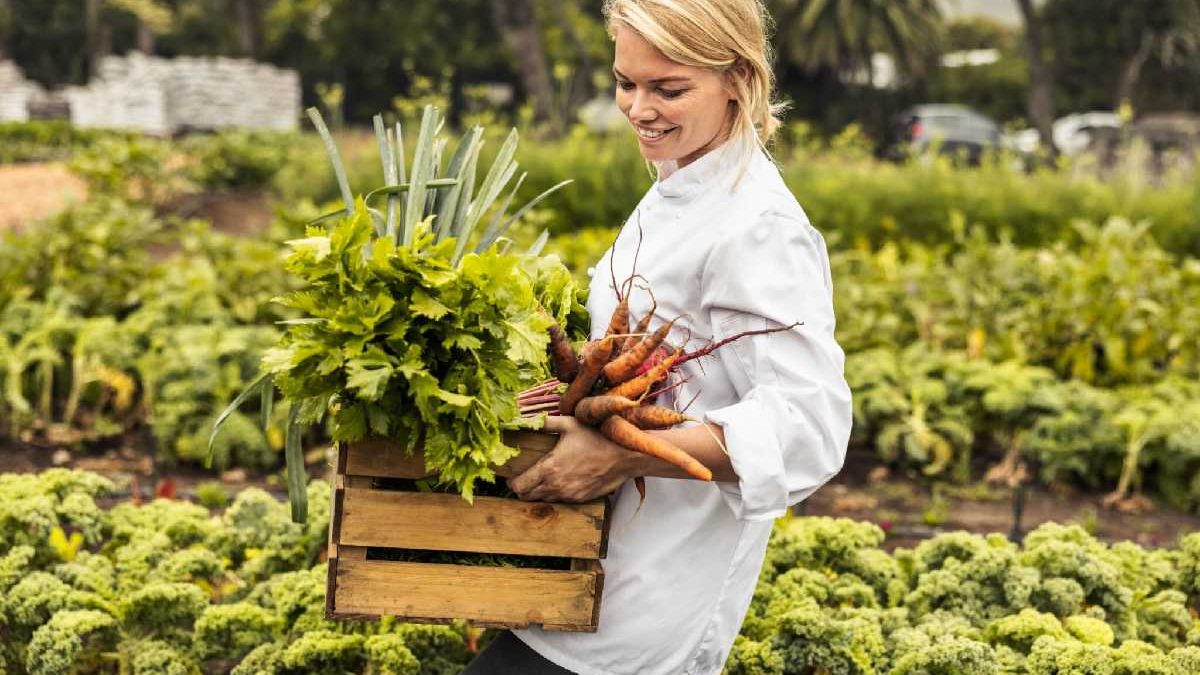In recent years, the “farm to table” movement has been gaining significant traction. It’s popular among food enthusiasts, environmentalists, and health-conscious individuals. This movement emphasizes sourcing ingredients directly from local farms. It avoids the global supply chain. The global supply chain is often criticized for its environmental impact and questionable labor practices. At its heart, farm to table is more than a trend; it’s a commitment to sustainability, community support, and culinary excellence.
Table of Contents
The Essence of Farm to Table
Farm to table is all about freshness, locality, and transparency. It involves restaurants and cafes sourcing their ingredients directly from nearby farms. It also includes home cooks doing the same. This ensures that the food is not only fresh but also seasonal, which is a key aspect of this movement. Eating seasonally means that diners get to enjoy fruits and vegetables at their peak flavor and nutritional value.
Moreover, farm to table is not just about physical proximity; it’s about building relationships. Chefs often work closely with farmers. They understand their methods and even influence the types of crops they grow. This relationship fosters a deeper connection with food, one that honors the labor and love that goes into producing it.
Environmental Impact
One of the most compelling aspects of the farm to table movement is its positive impact on the environment. Local sourcing reduces the need for long-distance food transportation, which is a significant contributor to greenhouse gas emissions. Moreover, small local farms tend to use more sustainable farming practices compared to large-scale industrial farms. These practices include crop rotation, avoiding harmful pesticides, and maintaining healthy soil, which are beneficial for the environment.
Supporting Local Economies
When you buy from local farmers, the money stays within the community and helps to support regional economies. This is crucial for the survival of small farms, which often struggle to compete with larger, industrialized agriculture operations. The farm to table movement helps keep small farms afloat. It also helps preserve rural livelihoods and traditions.
Health Benefits
Fresh, locally sourced food is typically healthier. Produce can be harvested at its peak. It doesn’t need preservatives to maintain its freshness because long-term storage and transport aren’t required. This means that the food is richer in nutrients and free from additives, leading to better health outcomes for consumers.
Challenges and Considerations
Despite its benefits, the farm to table movement faces challenges. One of the primary issues is the higher cost of locally sourced, organic produce compared to mass-produced goods. This can make farm-to-table options less accessible to lower-income individuals. Additionally, in regions with harsh climates or limited agricultural output, relying solely on local produce can be impractical.
A Symbol of Cultural Shift
Beyond its practical aspects, farm to table represents a cultural shift towards more mindful consumption. It’s about knowing where your food comes from. It’s also about understanding its journey from seed to plate. This movement encourages consumers to think critically about their food choices. It also encourages them to consider their broader impact on the world.
For those who enjoy the excitement of farm-fresh produce, the concept can be as thrilling as playing a fruit shop slot free game. Each spin unveils a new array of colorful, fresh fruits. Just like in these games, the farm-to-table movement brings a sense of surprise and delight with each seasonal change. It offers new flavors and experiences.
In conclusion
The farm to table movement is more than just a culinary trend; it’s a holistic approach to eating and living. It’s about fostering a sustainable, healthy, and equitable food system that benefits everyone from the farmer to the consumer. As this movement grows, it paves the way for a future where food is not only delicious but also responsible and nurturing for both people and the planet.


